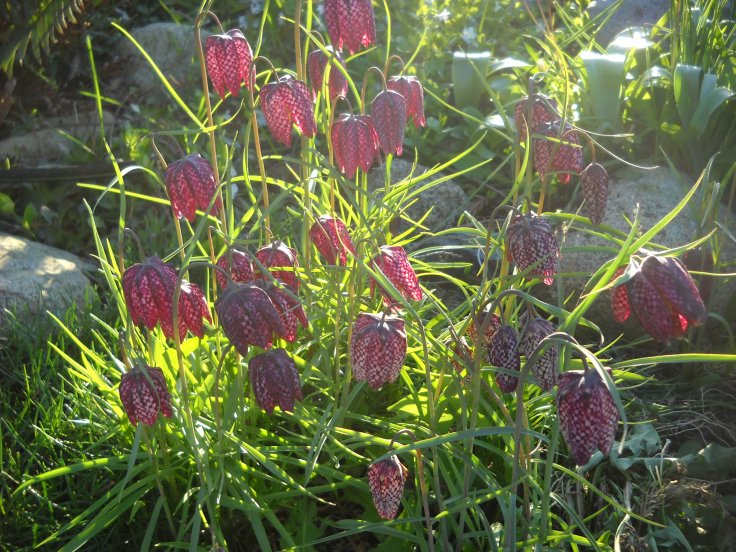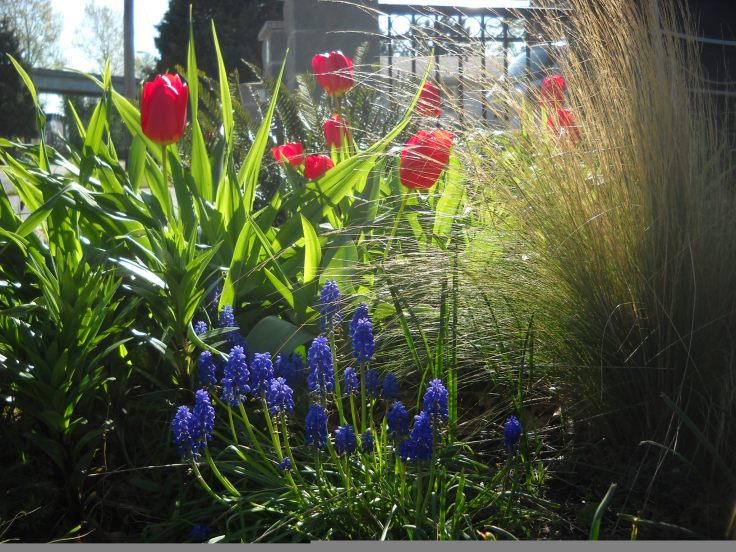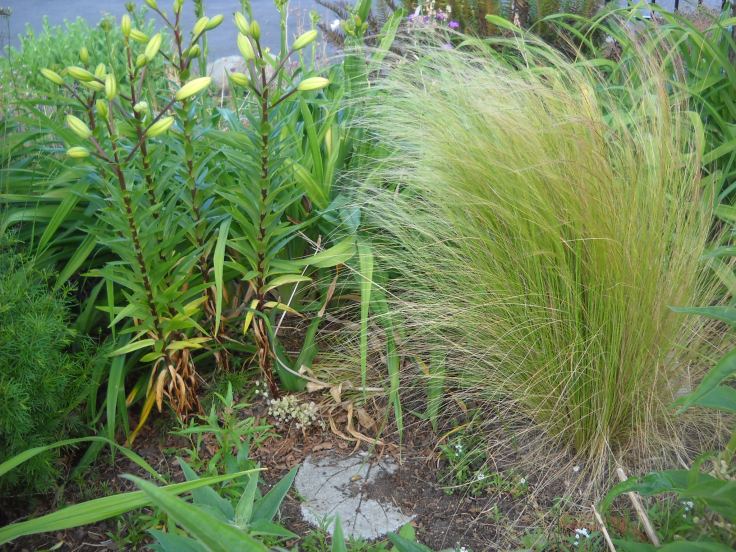Here are a few design tips for your early spring garden.
TIP #1–It’s all about BULBS!

There are some things that bloom really early in the year– Witch hazel (Hamemellis) and some of the Rhodos in January, Sweet Box (Sarcococca) and Edgeworthia in February– but for simple delight, you can’t beat BULBS. Snowdrops (Galanthus) are earliest, then crocus, grape hyacinths (Muscari), chionodoxa, reticulate iris, then daffs, botanical tulips, fritillary, then late daffs and late tulips, and latest of all, alliums. (I’ve left out lots, so just check out your local nursery.) You can reliably have blooms from bulbs February to June! (There are some very late alliums that bloom in July-Aug!)
DRIFTS

2. Plant in “drifts”. It’s often said you should plant identical things in odd numbers, but of course once you’re above 5 or 7, it’s a moot point. Who’s going to count? Because each bulb only results in one bloom (usually), you’ll want to plant many of any one species or colour in order to appreciate the impact.
SQUIRRELS
3. Remember your garden “guests”. Squirrels LOVE bulbs. But they don’t like daffs, and they don’t like to have to dig too deeply. So there are a few things you can do to deter squirrels: You can plant the bulbs deeper than the package instructs. Generally you plant a bulb 3-5 times it’s own depth. So a 1″ tulip would be planted so the base of it is 3-5″ below ground level. Go with the 5″, and make sure you don’t underestimate. If the bulb is a bit deeper than it’s 5x depth, it will still come up, maybe just a little later. For smaller bulbs that necessarily will be closer to the surface, and easier for squirrels to access, I like to cover them with a patch of chicken wire; the shoots will come through the spaces, but the squirrels will be stumped! And finally, if you’re not fussed about “purity”, throwing the odd daff into your other bulb drifts will deter the squirrels from the whole lot. Nice.
LAYERS
4. Plant bulbs in layers. This is especially effective in containers, but will work everywhere. You’ve got bulbs that blooms at different times, and different size bulbs (hence different depths of planting). Perfect. Not only will you get more bang for the space, but the later growing shoots will hide the fading foliage of earlier blooms.

Important point: when the blooms of any of your bulbs have faded, DON’T cut back or in any other way interfere with the green foliage. (Unless of course you’re treating your bulbs as annuals and will replace them every year. Maybe fine for the hort department of your city, but IMO not for the home gardener.) The leaves are still photosynthesizing and supplying growth nutrition to the bulb.
FOLIAGE
5. Locate your bulb drifts where other perennials will grow up and hide the faded foliage. In most cases the bulbs will be coming up before your herbaceous perennials begin to waken from their long winter’s nap, so they are the stars of the show. But not so beautiful when the blooms die off. You can cut off the flower stem and leave the foliage, and soon your echinaceas and shasta daisies and hostas will spring up. A variant of this principle is to grow them under deciduous shrubs. Until the shrub leafs out, the ground is in full sun for your bulbs; when the foliage is looking tatty the shrub has filled out. 

One great thing about gardening in coastal BC is the length of our Fall–it really goes almost to Spring! Now is the time to plant your Spring bulbs, but if you forget this month, there’s still next month–October. And November. And December. But why wait–do it now.

